Nature Knows and Psionic Success
God provides
Dr. Ryan Cole: Spike protein in COVID shots can cause serious damage to arteries

( Natural News ) Dr. Ryan Cole has warned that the SARS-CoV-2 spike protein used in the Wuhan coronavirus (COVID-19) vaccines can cause serious damage to arteries .
The pathologist and CEO of Idaho-based Cole Diagnostics issued this warning during an appearance on “Ask Dr. Drew.” He told program host Dr. Drew Pinsky that the spike protein expresses itself in brain tissue, major organs and other areas of the body “wherever the lipid nanoparticle (LNP) distributes,” even including slides to back up his explanation.
“It does get through the blood-brain barrier,” said Cole, pertaining to the LNP. “We know the spike [protein] gets through as well. So it’ll follow the small capillaries and leak into whatever tissue it wants to.”
The pathologist then presented additional slides that showed SARS-CoV-2 spike proteins accumulating in the aorta, the heart’s main artery.
“This is something that is unusual. Usually, you’ll see this in genetic conditions where the aorta ruptures,” he pointed out. “That spike protein [is] literally causing the lymphocytes to chew a hole in the aorta. This is the biggest blood vessel in your body, coming off your heart. When that ruptures, you’re gone in minutes.”
“That’s just another example of what deposited spike protein and the induced inflammation can do,” Cole continued.
Cole and fellow program guest Dr. Kelly Victory talked about the fibrous “foot-long blood clots” taken out of autopsy patients. Brighteon.TV host Dr. Jane Ruby first broke the news of these clots after embalmer Richard Hirschmann attested to the phenomenon and presented samples of the clots to her.
“[There] is [an] unusual amount of collected proteins,” Cole said, adding that the clots are made up of “unusual combinations of proteins that make it difficult for the body to dissolve.” (Related: mRNA in COVID-19 vaccines contain FAKE URACIL which may be causing white, rubbery clots. )
Cole eventually exhorted his colleagues around the world to continue researching the long-term health effects of the experimental mRNA COVID-19 injections. COVID-19 shots can also damage organs, immune system
Prior to his appearance on “Ask Dr. Drew,” Cole had been vocal in denouncing the COVID-19 injections due to the harm they cause.
He elaborated on the harms of the spike protein during the July 2021 White Coat Summit organized by America’s Frontline Doctors in Texas. Cole gave three examples of how the spike protein damages organs: Lung cells affected by the spike protein turned purple and blue due to the excess inflammation, caused by the spike protein attaching to the lungs’ ACE-2 receptors.
Blood vessels in the brain ended up being inflamed after the spike protein crossed the blood-brain barrier.
The pericardium or heart lining suffered inflammation, which is to blame for the rise in cardiac inflammation among vaccinated younger Americans.
Later in January, Cole expounded on the COVID-19 vaccines’ impact on the immune system during an interview at the Defeat The Mandates Rally in Washington, D.C. He explained to Veronika Kyrylenko of the New American magazine that human cells have toll-like receptors (TLRs) that classify whether a foreign object in the body is harmful or not.
“When the [COVID-19] shots go into the body, they turn some of these [TLRs] off. Normally, they have to be on,” he said. TLRs deactivated by the vaccine, according to Cole, include TLR7 and TLR8 (in charge of detecting viruses) and TLR3 and TLR4 (in charge of keeping cancer under control.)
Moreover, Cole said the SARS-CoV-2 spike protein binds to the P53 gene that suppresses tumors. Its S1 subunit also links to two genes that play a role in cancer – the TMPRSS-2 gene linked to male prostate cancer and the BRCA genes linked to female breast cancer.
Watch Dr. Ryan Cole’s January interview with Veronika Kyrylenko of the New American magazine below. No compatible source was found for this media. More related stories:
Idaho doctor reports “20 times increase” in cancer among those “vaccinated” for covid.
Idaho pathologist says data show that “cancers are taking off like wildfire” thanks to COVID vaccines.
Sources include:
NewsPunch.com
Brighteon.com 1
Brighteon.com 2
Roughly 87,000 Disney-themed clothes for children RECALLED over lead poisoning risk

( Natural News ) The Bentex Group, an apparel and home decor design and production company, recently pulled out around 87,000 children’s clothes as the textile paint on them contained dangerous levels of lead that can poison kids.
Families were urged to immediately discard the recalled products. The kids’ clothes, which were manufactured in Egypt, were distributed by major retailers all over the United States, including TJ Maxx, DD’s/Ross, Burlington and Amazon between November 2021 and August 2022.
The recall involved children’s clothing sets in nine different Disney-themed styles, with pictures of popular characters Yoda, Mickey and Minnie Mouse and Winnie the Pooh. They were priced between $5 and $25.
Bentex issued an apology via an Instagram post: “We sincerely apologize for any inconvenience this may have caused you and appreciate your understanding in this matter.”
The New York based-company has published a list of styles included in the recall and advised all consumers to check the item and batch numbers printed on the clothing neck or side label. Affected families can contact the company and request a full refund .
According to the Consumer Product Safety Commission (CPSC), there have been no reports of injuries yet. However, the World Health Organization (WHO) warned that high levels of lead exposure in children can cause irreversible brain damage , comas, convulsions and even death.
“Children who survive severe lead poisoning may be left with intellectual disability and behavioral disorders,” the WHO added.
As per the Centers for Disease Control and Prevention (CDC), no level of lead is considered safe in children, with even low levels in blood hurting a child’s ability to learn, pay attention and do well in school. (Related: Lead is harmful at any dose; push is on to lower lead limits for Americans .)
Federal laws have banned the use of lead in paints or inks beyond trace amounts since 1978. Lead has already been replaced with other substances.
The admission that children’s clothes contained dangerous amounts of lead has infuriated parents.
“I am so angry about this. You don’t accidentally have lead products. I purchased a few of these products,” a parent posted online. “What the h*ll! How does this even happen?” said another parent.
Another one said: “So, our children are getting exposed to lead and you are just offering a $20 refund? How does that in any way make poisoning our kids right?” Sippy cups, baby bottles also contain lead
The children’s sleepwear recall came after tens of thousands of sippy cups and stainless-steel baby bottles were pulled out from the market as they contained a hazardous amounts of lead.
“Healthy and natural” baby products manufacturer Green Sprouts also announced last week that they are recalling thousands of stainless-steel bottles and sippy cups because the base of the products can break off, posing a lead-poisoning risk to children.
The Asheville, North Carolina-based company has received seven reports of the bottle’s base breaking off, exposing a solder dot containing lead , according to the CPSC recall notice .
According to CBS News , the recall involves about 10,500 cups and bottles sold at Buy Buy Baby and Whole Foods stores nationwide and online at amazon.com, buybuybaby.com and bedbathandbeyond.com from January 2020 through September 2022 for between $14 and $19.
Included in the recall were the six-ounce sprout ware sippy cup, six-ounce sprout ware sip and straw cup and the eight-ounce sprout ware straw bottle. The recalled products were all made in China, with tracking numbers 29218V06985, 35719V06985 and 33020V06985 at the bottom of the base. Consumers were urged to discard the recalled products and contact Green Sprouts for a refund or store credit.
The company further said in a separate statement that the products were sold online at babyhaven.com, drugstore.com and target.com.
Visit HeavyMetals.news for more stories related to various recalls of products that contain dangerous amounts of lead.
Watch the video below that talks about why heavy metals are so toxic to the body . No compatible source was found for this media. More related stories:
Is exposure to lead a risk for arthritis? Study finds correlation between lead in the blood and knee osteoarthritis .
Medical bombshell: Lead exposure kills 412,000 Americans a year… here’s how exposure happens .
Thousands of premature deaths from cardiovascular disease in the U.S. linked to historical lead exposure . Sources include:
CPSC.gov 1
CBSNews.com
GreenSproutsBaby.com
Turmeric: One of the world’s most powerful superfoods
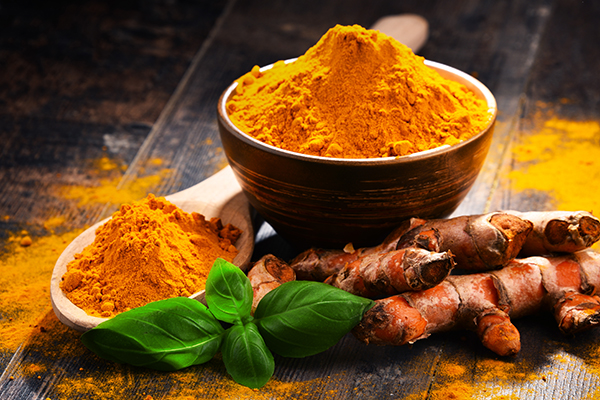
( Natural News ) Dubbed the golden spice of life, turmeric ( Curcuma longa ) is one of the world’s most powerful superfoods . It is a rich source of vitamins and minerals, and contains more than 300 naturally occurring plant nutrients. Curcuminoids, phytonutrients naturally found in turmeric, are five to eight times more potent than vitamins C and E.
Turmeric’s bright yellow color makes it a key ingredient in popular Asian, Indian and African dishes. This rhizome is also used in Ayurveda and other traditional Indian medical systems. Traditional Chinese medicine, meanwhile, uses turmeric to address a variety of conditions, including depression and disorders of the skin, joints, liver, upper respiratory tract, joints, the digestive system and many others.
Outside of its golden color, here are some good reasons to include turmeric in the daily diet . Turmeric ensures a well-functioning immune system
According to a study published in the Journal of Clinical Immunology , the curcumin in turmeric enhanced antibody responses , helping fight infection in turn. It also mentioned that curcumin can suppress pro-inflammatory compounds. “This suggests that curcumin’s reported beneficial effects in arthritis, allergy, asthma, atherosclerosis, heart disease, Alzheimer’s disease, diabetes and cancer might be due in part to its ability to modulate the immune system,” the researchers wrote. Turmeric helps maintain healthy bones and joints
A 2016 study published in BoneKEy Reports elaborated on how turmeric promotes healthy bones and joints . First, it prevents the loss of bone minerals and maintains bone density – reducing the risk of osteoporosis. Second, turmeric helps in bone healing by preventing the growth of cells that absorb old bones while letting the formation of new bones proceed. Third, turmeric’s anti-inflammatory compounds make it a safer and natural alternative to painkillers for people suffering from joint pains. (Related: Study: Curcumin is better than anti-inflammatory drug for rheumatoid arthritis. ) Turmeric helps maintain healthy brain function
An study published in The American Journal of Geriatric Psychiatry back in 2017 featured 40 participants, 21 of which were given 90 milligrams of curcumin twice daily. It found that taking turmeric on an everyday basis boosted participants’ brain function , leading to significant improvements in memory and attention in adults without dementia. The curcumin in turmeric also reduced the toxicity of heavy metals like cadmium and lead, while its anti-inflammatory properties shielded the brain from neurodegeneration. Turmeric promotes a healthy digestive system
Based on a study published August 2020 in Nutrients , the curcumin in turmeric was able to shift the balance of bacteria in the gut in favor of beneficial strains . Curcumin consumption enabled good strains such as Bifidobacteria and Lactobacilli to thrive, while levels of pathogenic bacteria often associated with the onset of systemic diseases dwindled. In particular, curcumin consumption helped reduce the amount of the Prevotella bacteria linked to certain types of cancers. Turmeric promotes healthy skin and hair
According to a paper published in the International Journal of Pharmaceutical Sciences and Research, turmeric serves as a “food for the skin.” The rhizome slowed down cell damage and helped prevent premature aging – making it perfect for reducing skin inflammation and evening out skin tone. The authors of the study also suggested turmeric as an excellent solution for skin conditions such as acne, eczema, psoriasis, skin cancers because of its anti-bacterial and antiseptic properties.
Turmeric is a versatile superfood that can be consumed both as food and beverage. It can be mixed into curries and other dishes, used to season meats, and be sprinkled into soup. Golden milk, a combination of preferably non-dairy milk and turmeric powder, enables easier absorption of curcumin. A dash of black pepper helps make turmeric’s plethora of phytonutrients easier to absorb.
So, spice up your diet with turmeric to experience its health benefits .
Watch this video that outlines 10 health benefits of turmeric . No compatible source was found for this media. More related stories:
Discover the superfood power of turmeric .
Protect your heart with turmeric .
Sources include:
TheEpochTimes.com
Link.Springer.com
Access.Portico.org
AJGPOnline.org
MDPI.com
IJPSR.com
Brighteon.com
Scientists Improved People’s Short-Term Memory by Zapping Their Brains with Lasers
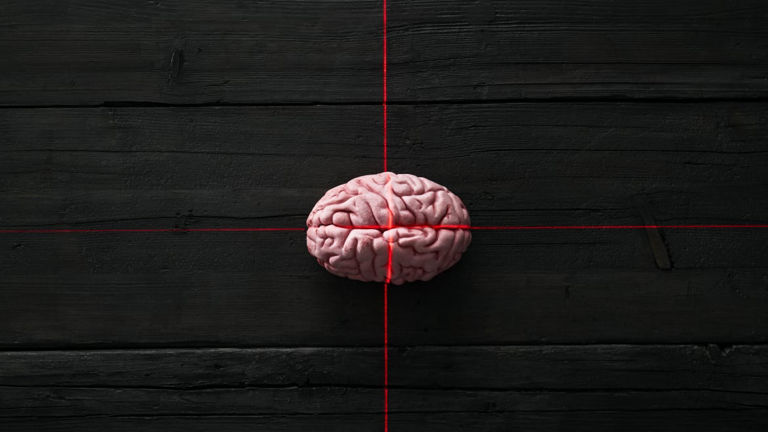
Do you find it hard to focus? Do you often go into a room and immediately forget why you went in there? Can you not remember people’s names at all?
Well, scientists have found evidence for a new treatment for your bad memory: shooting frickin’ lasers at your brain.
In a study published Dec. 2 in the journal Science Advances , an international team of researchers found that laser light therapy helped improve short-term memory in participants by up to 25 percent. The treatment, dubbed transcranial photobiomodulation (tPBM), involves a device worn over the skull that fires the laser into the right prefrontal cortex—an area of the brain responsible for working memory.
The study’s authors found that the participants’ memories improved after just seven minutes of treatment—and could pave the way for a non-invasive treatment to boost memory and cognition.
“People with conditions like ADHD [attention deficit hyperactivity disorder] or other attention-related conditions could benefit from this type of treatment, which is safe, simple and non-invasive, with no side-effects,” Dongwei Li, a neuroscientist at the University of Birmingham and co-author of the paper, said in a statement .
The experiment involved 90 participants between the ages of 18 and 25. A portion of them received laser treatment using longer wavelengths of light, another group received tPBM with shorter wavelengths, while the last set received a placebo.
After the tPBM treatment, the researchers asked the volunteers to recall the colors and orientations of items displayed to them on a screen. Those who received the long wavelength tPBM treatment showed better recall than the other groups. For example, the full tPBM treatment set recalled roughly four to five objects on average, while the other groups recalled just three to four objects.
Despite its promise, researchers still aren’t sure why exactly the laser treatment works. However, they believe that the light might be stimulating the nerve cells of the prefrontal cortex resulting in “a positive effect on the cells’ efficiency,” Ole Jensen, a brain health researcher at the University of Birmingham and co-author of the study, said in a statement.
The experiment builds on previous research that found that memory in mice improved after the tPBM treatment. A similar study from the University of Oxford found that the laser therapy gave a moderate boost to participants age 65 and older. While not a panacea for age-related memory loss, it could definitely help improve the cognition for many people.
More research is needed to understand the full effect of the laser treatment. But if these results are any indication, it could be an effective and novel way to treat memory issues. Now if only we could remember where we put our house keys…
Read more at The Daily Beast.
Got a tip? Send it to The Daily Beast here
The Brain Aging Clock Ticks Faster Depending on Sex
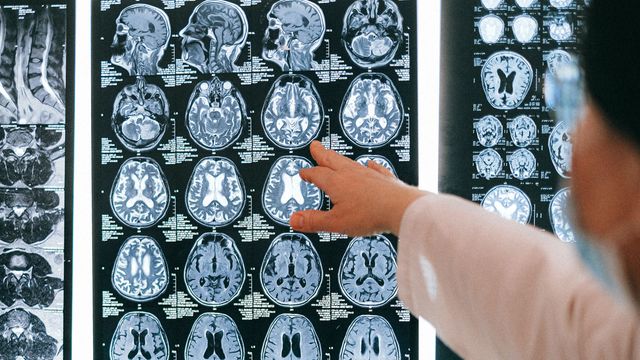
Humans lose brain volume as they age, at an estimated rate of 5% per decade after age 40. But that estimate obscures the role that individual physiology plays in regards to functiona l brain aging. Utilizing sophisticated analytic tools, researchers at the Buck Institute and the University of California, San Francisco analyzed 554 patients using volumetric MRIs and blood immune samples taken over the course of a decade. The results of the study, appearing in The Proceedings of the National Academy of Sciences, show that functional brain networks are affected in different ways by aging, gender and blood immune factors.
Researchers, led by bioinformatics scientist Nikola Markov, PhD, first looked at circulating blood proteins, identifying patterns of concentrations of inflammatory proteins that increase with age, a process called “inflamm-aging.” The correlation with aging was so clear that the scientists were able to predict the chronological age of a person with striking precision just by analyzing the concentration profile of these proteins. This measure is called CyClo or a “cytokine clock.” Researchers found that both the cytokine clock and brain shrinkage follow different trajectories depending on gender, with females having a faster ticking cytokine clock even though they were more protected from brain shrinkage overall.
“ This work breaks open the black box between aging and neurodegeneration ,” says senior author and Buck Institute associate professor David Furman, PhD . “We are now able to differentiate between the brain shrinkage caused by aging versus the shrinkage caused by chronic inflammation. “Basically, if we remove the causality of time and someone has high inflammation they are on track to have a smaller brain in certain areas. In addition, by identifying inflammatory biomarkers of brain aging we have potential targets for both early diagnostics and the prevention of age-related neurodegeneration.”
The findings are based on a canonical correlation analysis. This technique allows researchers to take two sets of variables collected in the same individual and decouple the effects of these variables on a particular outcome, in this case, brain regions that are functionally connected. It also allows scientists to see in the same individual how the parameters correlate to each other. Researchers in this study analyzed three parameters – age, gender and CyClo – as well as the measures of the volume of seven functional brain networks in the same dataset. Markov says the correlation functions revealed interesting observations. The variability of chronological age measured in the population constructed the strongest correlation function with the volume of the brain networks dedicated to motor control and body sensing. The gender of the subject correlated with the visual system, ventral attention and frontoparietal networks. The biological age represented by the cytokine clock, CyClo, correlated the most with the limbic, default mode and dorsal attention network which is concerned with orienting one’s focus on a particular task.
“The significance is not just that we’ve mapped the cytokine clock to gray matter, but that we’ve done it by looking at functional networks, areas in which neurons fire together, work together, connect, and interact together.” said Markov. “We also found that although the networks are distributed across the brain, they share common vulnerabilities to the process of getting old.”
Markov says the next challenge is to understand how these immune circulating proteins directly impact the aging brain and why there are some parts of the brain that are more sensitive to peripheral inflammation than others. He says the most impactful immune proteins, or cytokines/chemokines, that showed up in blood samples include IL-6 and TNF alpha which are associated with the chronic inflammation that increases with age, as well as VEGF and PLGF, which seem to be critical for the health of the vascular system, especially the small capillaries. Researchers also identified MCP-1, Vcam-1 and Eotaxin-1 which are chemokines that change with age and attract immune cells from the blood to cross the brain blood barrier. Markov says when those chemokines cross the brain blood barrier, they cause activation of microglia, a potential initiator of the neurodegenerative process.
Going forward Furman sees two potential uses for the science: “Once we have identified that the most affected networks are also mapping to cognitive impairment in individuals who are diagnosed with Alzheimer’s or Mild Cognitive Impairment, then we have a diagnostic test. The next opportunity involves the question of whether we can modify this cocktail of cytokines to help individuals be more resilient and avoid decline in these different areas of the brain where we saw a decline in function.”
Reference: Markov NT, Lindbergh CA, Staffaroni AM, et al. Age-related brain atrophy is not a homogenous process: Different functional brain networks associate differentially with aging and blood factors. PNAS. 2022;119(49):e2207181119. doi: 10.1073/pnas.2207181119
This article has been republished from the following materials. Note: material may have been edited for length and content. For further information, please contact the cited source.
Advertisement
6 best foods for brain health, memory: Fish, berries, greens & more
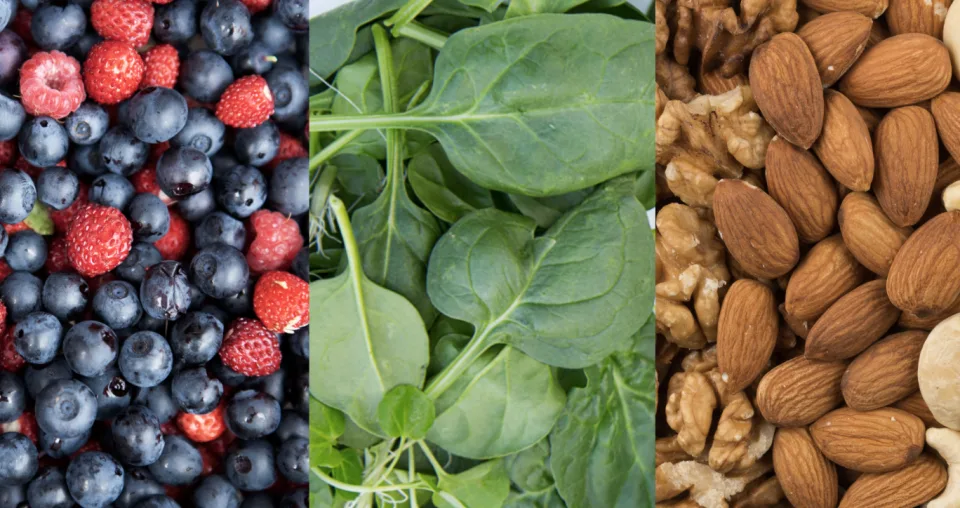
Foods such as berries, greens and nuts can improve brain health and memory. (Photos via Getty Images) This article is for informational purposes only and is not a substitute for professional medical advice, diagnosis or treatment. Contact a qualified medical professional before engaging in any physical activity, or making any changes to your diet, medication or lifestyle.
“You are what you eat” isn’t just an old adage — it’s the truth when it comes to your brain.
Foods that raise your low-density lipoprotein (LDL) cholesterol, such as saturated and trans fats, not only clog your arteries and affect your heart, but are also bad for your brain.
Over time, a diet heavy in LDL can negatively affect your brain health and memory due to a buildup of beta-amyloid plaques in your brain.
However, if you maintain a diet that focuses on poly and monounsaturated fats, you’ll be doing yourself a favour in the short and long term.
Read on to learn some of the best foods that science says will boost your memory and brain health over time. Fatty fish, like salmon, helps develop brain cells. (Photo via Getty Images) Fatty fish
Fatty fish almost always tops the list for brain-healthy foods. Why? Fatty fish are treasure troves of omega-3 fatty acids, which are healthy fats that have been linked to lower levels of beta-amyloid plaques that form damaging clumps in the brain.
Omega-3 fatty acids also play a vital role in your nervous system, accounting for half the fat that makes up your brain . These fats help develop brain cells, making them a vital part of learning and memory.
Here are some excellent fatty fish options that are rich in omega-3s: Salmon
Canned light tuna
Atlantic mackerel
Herring
Sardines
Cod
Trout
Pollock
Whole grains are rich in vitamin E, an antioxidant that protects your brain cells from oxidative stress. (Photo via Getty Images) Whole grains
Whole grains are rich in vitamin E, an antioxidant that protects your cells from oxidative stress to which the brain is highly susceptible. Oxidative stress contributes to memory degeneration later in life, but high levels of vitamin E have been associated with better brain performance .
You can incorporate whole grains into your diet by replacing refined carbohydrates like breakfast cereals, white rice and white bread with whole grains such as: Vitamin K, found in leafy green vegetables, slows the effects of cognitive decline and are excellent for brain health. (Photo via Getty Images) Vitamin K, beta carotene, lutein and folate are beneficial nutrients found in leafy green vegetables. that these nutrients help slow the effects of cognitive decline and are excellent for brain health.
In fact, just a 160-gram serving of broccoli will deliver more than 100 per cent of your daily recommended intake of vitamin K — which has been when consumed in high doses. Nuts are rich in nutrients that aid memory and benefit your brain. (Photo via Getty Images) A diet rich in nuts has been linked to later in life and contributes to a . Coffee can protect your brain against Parkinson’s and Alzheimer’s. (Photo via Getty Imsges) Dr. Donald Weaver, , published a study in that found a correlation between certain roasting processes and a decreased risk of Alzheimer’s and Parkinson’s disease.
Additionally, reasonable coffee consumption has been linked to several , including a reduced risk of heart disease, protection against certainand reduced . Berries increase brain elasticity and reduce inflammation. (Photo via Getty Images) Not only do the powerful antioxidants found in dark-skinned berries help , but they’ve also been shown to by:
Crossword puzzles beat computer video games in slowing memory loss
A new study by researchers from Columbia University and Duke University published in the journal NEJM Evidence shows that doing crossword puzzles has an advantage over computer video games for memory functioning inolder adults with mild cognitive impairment.
In a randomized, controlled trial, led by D.P. Devanand, MD, professor of psychiatry and neurology at Columbia, with Murali Doraiswamy, MD, professor of psychiatry and medicine at Duke, researchers determined that participants (average age 71) trained in doing web-based crossword puzzles demonstrated greater cognitive improvement than those who were trained on cognitive video games.
“This is the first study to document both short-term and longer-term benefits for home-based crossword puzzles training compared to another intervention,” said Dr. Devanand, who oversees brain aging and mental health research at Columbia. “The results are important in light of difficulty in showing improvement with interventions in mild cognitive impairment.”
Crossword puzzles are widely used but have not been studied systematically in mild cognitive impairment, which is associated with high risk for dementia, including Alzheimer’s disease.
To conduct their study, researchers at Columbia and Duke randomly assigned 107 participants with mild cognitive impairment (MCI) at the two different sites to either crossword puzzles training or cognitive games training with intensive training for 12 weeks followed by booster sessions up to 78 weeks. Both interventions were delivered via a computerized platform with weekly compliance monitoring.
The most striking findings of the trial were: Crossword puzzles were superior to cognitive games on the primary cognitive outcome measure, ADAS-Cog, at both 12 weeks and 78 weeks. Crossword puzzles were superior on FAQ, a measure of daily functioning, at 78 weeks.
Crossword puzzles were superior for participants at a later disease stage but both forms of training were equally effective in an earlier stage.
Brain shrinkage (measured with MRI) was less for crossword puzzles at 78 weeks.
“The benefits were seen not only in cognition but also in daily activities with indications of brain shrinkage on MRI that suggests that the effects are clinically meaningful,” Dr. Devanand said.
The study also highlights the importance of engagement. Based on remote electronic monitoring of computer use, participants at a later stage of impairment may have better engaged with the more familiar crossword puzzles than with computerized cognitive games.
Two strengths of the trial are the 28% participation rate of individuals from racial and ethnic minority groups and the low drop-out rate (15%) for such a lengthy home-based trial. A study limitation was the absence of a control group that did not receive cognitive training.
While these results are highly encouraging, the authors stress the need for replication in a larger controlled trial with an inactive control group.
“The trifecta of improving cognition, function and neuroprotection is the Holy Grail for the field,” said Dr. Doraiswamy. “Further research to scale brain training as a home-based digital therapeutic for delaying Alzheimer’s should be a priority for the field.”
Story Source:
Materials provided by Columbia University Irving Medical Center . Note: Content may be edited for style and length.
Journal Reference :
> D. P. Devanand, Terry E. Goldberg, Min Qian, Sara N. Rushia, Joel R. Sneed, Howard F. Andrews, Izael Nino, Julia Phillips, Sierra T. Pence, Alexandra R. Linares, Caroline A. Hellegers, Andrew M. Michael, Nancy A. Kerner, Jeffrey R. Petrella, P. Murali Doraiswamy. Computerized Games versus Crosswords Training in Mild Cognitive Impairment . NEJM Evidence , 2022; DOI: 10.1056/EVIDoa2200121
Cite This Page : MLA
APA
Chicago
Columbia University Irving Medical Center. “Crossword puzzles beat computer video games in slowing memory loss: Study finds adults with mild cognitive decline assigned puzzles showed less brain shrinkage, better daily functioning.” ScienceDaily. ScienceDaily, 27 October 2022.
Improve memory as you age by eating more flavonols, study says
Eating more flavonols, antioxidants found in many vegetables, fruits, tea and wine, may slow your rate of memory loss, a new study finds.
The cognitive score of people in the study who ate the most flavonols declined 0.4 units per decade more slowly than those who ate the fewest flavonols. The results held even after adjusting for other factors that can affect memory, such as age, sex and smoking, according to the study recently published in Neurology, the medical journal of the American Academy of Neurology.
“It’s exciting that our study shows making specific diet choices may lead to a slower rate of cognitive decline,” said study author Dr. Thomas Holland, an instructor in the department of internal medicine at Rush University Medical Center in Chicago, in a statement.
“Something as simple as eating more fruits and vegetables and drinking more tea is an easy way for people to take an active role in maintaining their brain health.”
Flavonols are cytoprotective, meaning they protect cells, including neurons, so it’s plausible there could be a direct impact on cognition, said Dr. David Katz, a specialist in preventive and lifestyle medicine and nutrition who was not involved in the study.
“But they are also a marker of higher intake of fruits and vegetables — which is good for the brain because it is good for every vital organ, and the organism as a whole,” Katz said in an email.
“They may also be a marker of better overall diet quality, or even greater health consciousness. People who are more health conscious may do things to preserve their cognition, or maybe being more health conscious is a by-product of better cognition.”
Plants contain over 5,000 flavonoid compounds, which play roles in producing cell growth, fighting environmental stress and attracting insects for pollination.
Flavonols, a type of flavonoid, have been shown in animal and some human studies to reduce inflammation, a major trigger for chronic disease, and are rich sources of antioxidants. Antioxidants combat free radicals, “highly unstable molecules that are naturally formed when you exercise and when your body converts food into energy,” according to the National Center for Complementary and Integrative Health, part of the National Institutes of Health .
One of the most common flavonols, quercetin, has shown promise in reducing the onset of colorectal cancer and other cancers, according to studies . Onions contain the highest levels — lower levels can be found in broccoli, blueberries, cauliflower, curly kale, leeks, spinach and strawberries.
Another common flavonol, kaempferol, appears to inhibit the growth of cancer cells while preserving and protecting normal cells. Good sources of kaempferol are onions, asparagus and berries, but the richest plant sources are spinach, kale and other green leafy vegetables, as well as herbs such as chives, dill and tarragon.
A third major player is myricetin, which has been studied in rodents for blood sugar control and the reduction of tau, a protein that causes the hallmark tangles of Alzheimer’s and other dementia . Spinach and strawberries contain high levels of myricetin, but honey, black currants, grapes and other fruits, berries, vegetables, nuts and tea are also good sources.
The last group of flavonols, isorhamnetin, may protect against cardiovascular and neurovascular disease in addition to anti-tumor and anti-inflammatory benefits. Good sources of isorhamnetin are pears, olive oil, wine and tomato sauce.
You can find a full list of the flavonoid content of various fruits and vegetables here. An older, dementia-free population
The new study asked 961 people with an average age of 81 and no signs of dementia to fill out a food questionnaire each year for seven years. In addition, the participants underwent annual cognitive and memory tests and were quizzed on their time spent being physically and mentally active.
People were divided into groups based on their daily intake of flavonols. The lowest intake was about 5 milligrams a day; the highest 15 milligrams a day — equal to about a cup of dark leafy greens, the study noted. (For comparison, the average flavonol intake in US adults is about 16 to 20 milligrams per day, according to the study.)
The study looked at the impact of the four major flavonols — kaempferol, quercetin, myricetin and isorhamnetin — on the rate of cognitive decline over the seven years.
The greatest impact was found with kaempferol: People who ate the highest amounts of foods with kaempferol showed a 0.4 units per decade slower rate of cognitive decline compared with those who ate the fewest, according to the study.
Myricetin was next: People who ate the most foods with myricetin had a 0.3 units per decade slower rate of cognitive decline compared with the lowest consuming group. People who ate the most foods with quercetin showed a 0.2 units per decade slower rate of cognitive decline.
Dietary isorhamnetin had no impact, the study found.
Despite the apparent positives, studies on the impact of flavonols on human health have been inconclusive -— mainly because many are observational and cannot show a direct cause and effect. That applies to the Neurology study as well, according to its authors.
A few randomized controlled trials — the scientific gold standard — have shown benefits associated with flavonols for controlling blood sugar in type 2 diabetes and improving cardiovascular health, according to the Linus Pauling Institute , home to the Micronutrient Information Center , an online database for nutrition information.
It’s not known whether these benefits are long term, the institute said, and no clear impact has been shown for cancer prevention or cognitive protection.
“There are other bioactives that may contribute to the observed outcomes,” Katz said. “Supplemental studies are required to isolate flavonoid effects fully.”
There’s also a downside to assuming a health impact without the necessary studies to back it up, said Dr. Christopher Gardner, a research professor of medicine and director of the Nutrition Studies Research Group at Stanford University.
“You can count on Americans wanting the benefits of plants but not wanting to eat them,” he said in an email.”(What) if people read the headline and rush out and buy bottled (extracted) flavonols instead of eating whole plant foods, and […]
Brain Imaging Shows How Young Kids Learn Quicker Than Grownups

THURSDAY, Nov. 17, 2022 (HealthDay News) — Ever wonder why kids seem to pick up new knowledge and skills faster than adults?
A new study attributes the kids’ mental prowess to differences in a brain messenger called GABA.
“Our results show that children of elementary school age can learn more items within a given period of time than adults, making learning more efficient in children,” said Takeo Watanabe , a researcher and professor at Brown University.
Children have a rapid boost of GABA, an amino acid, during visual training, according to study results reported Nov. 15 in the journal Current Biology . That GABA boost lasts after training ends.
In adults, concentrations of GABA stayed constant.
“It is often assumed that children learn more efficiently than adults, although the scientific support for this assumption has, at best, been weak, and, if it is true, the neuronal mechanisms responsible for more efficient learning in children are unclear,” Watanabe said in a journal news release.
To study this issue, researchers used behavioral and state-of-the-art neuroimaging techniques on 13 elementary school-age kids and 14 adults. They found that visual learning triggered an increase of GABA in children’s visual cortex. This is an area of the brain that processes visual information.
This finding predicts that training on new items rapidly increases the concentration of GABA in children, allowing the learning to be rapidly stabilized.
Researchers did additional experiments to back this up.
“In subsequent behavioral experiments, we found that children indeed stabilized new learning much more rapidly than adults, which agrees with the common belief that children outperform adults in their learning abilities,” said researcher Sebastian Frank , now at the University of Regensburg, Germany. “Our results therefore point to GABA as a key player in making learning efficient in children.”
These findings should encourage teachers and parents to give children many opportunities to acquire new skills, whether that’s mastering math facts or learning to swim, researchers said.
The results imply that even if kids lack cognitive control or attention, they have highly efficient processing in this domain.
“Although children’s brains are not yet fully matured and many of their behavioral and cognitive functions are not as efficient as in adults, children are not, in general, outperformed in their abilities by adults,” Watanabe said. “On the contrary, children are, at least in some domains such as visual learning, superior in their abilities to adults.”
Future research should examine differences in maturation rates between brain regions and functions, the authors said. More research could also include studying GABA responses in other types of learning, such as reading and writing.
More information
The U.S. National Library of Medicine has more on GABA .
SOURCE: Current Biology , news release, Nov. 15, 2022
How vitamin D promotes oxidative balance, boosts gut health and fights inflammation

( Natural News ) The beneficial biological actions of vitamin D support just about every physiological system in your body – brain health, cognitive function and nervous system health, gut health and immunity, healthy digestive system, heart health and cardiovascular function, hair and skin health, skeletal health, bone metabolism and others.
But some people are at risk of vitamin D deficiency .
These include dark-skinned people who have reduced ability to absorb ultraviolet B (UVB) rays from the sun; people who lack sun exposure (people who live in areas of high pollution, work night shifts or are homebound); infants who have not been breastfed; older adults whose skin’s ability to synthesize vitamin D decreases with age; those with health conditions that limit fat absorption; people with high levels of body fat; or people who are vegan and avoid foods that are rich in vitamin D.
Fortunately, they can use vitamin D supplements to help address that issue. Vitamin D supplements are available in capsules, sprays, chewables and drops.
Studies have identified key areas where vitamin D supplements can be of help . They are: Oxidative balance
A study in Pharmacological Research highlighted the positive effect of vitamin D supplementation on reducing oxidative stress and lipid peroxidation .
Lipid peroxidation is generally described as a process under which oxidants, such as free radicals, attack lipids, especially “good fats” or polyunsaturated fatty acids (PUFAs) that regulate hormones, transmit nerve impulses, cushion organs and store energy in the form of body fat.
In a new umbrella meta-analysis of Pharmacological Research , scientists specifically outline supplementation with vitamin D as a valid and effective solution for both combating oxidative stress and supporting pro-inflammatory actions .
A study published in Cureus demonstrated vitamin D’s ability to promote oxidative balance , also known as homeostasis. Thiol/disulfide (T/DS) homeostasis represents a promising new approach to evaluate oxidative stress. Gut microbiota
Science says immunity begins in your gut and is influenced by the thousands of bacteria, fungi, viruses and other microbes (collectively known as your gut microbiome) that live in it.
Some bacteria are associated with better health outcomes, others with poorer consequences.
In the gut microbiome, the “good bacteria” do more than just promote healthy digestion . They help keep your “bad bacteria” in check and they multiply so often that the unhealthy kind doesn’t have space to grow.
Equilibrium is what you call having a healthy balance in your gut.
A study published in Scientific Reports highlighted the positive impact of vitamin D supplementation on the richness and diversity of gut microbiota .
A separate study has also found that vitamin D supplementation increased the abundance of health-promoting bacteroidetes that provide protection from pathogens and metabolize or break down polysaccharides (starch, cellulose and glycogen) and oligosaccharides (sucrose, lactose and maltose), supplying nutrients to the host and other microbial residents of the gut.
It also decreased the abundance of bad gut microbes called firmicutes. Inflammatory response
Experts have consistently linked low levels of vitamin D to an increased risk of inflammatory diseases, such as arthritis, cardiovascular disease, multiple sclerosis and sepsis.
A study published in Biomolecules reported that recent epidemiological evidence has indicated a significant association between “vitamin D deficiency and an increased incidence or aggravation of infectious diseases and inflammatory autoimmune diseases, such as rheumatoid arthritis, systemic lupus erythematosus and multiple sclerosis.” (Related: Vitamin D supplementation helps sufferers of chronic hives .)
Vitamin D supplementation has been used to protect against or treat some inflammatory diseases, but its effectiveness remains unclear .
Researchers recommend further studies to “determine the mechanisms of vitamin D in each disease to establish proper treatment strategies for the future.” Important things you should know before taking vitamin D supplements
A study in the Journal of Nutrition and Metabolism has found that “Australians are spending massive amounts of money on vitamin D supplements, a portion of which may potentially be unnecessary .”
If you have a vitamin D deficiency, consult a natural health practitioner to learn the appropriate dose of vitamin D you need to take daily to address your specific health needs. (Related: Vitamin D supplementation—how will it help me improve my health? )
If you are not vitamin D deficient and consume more than you need, it is possible to reach toxic levels .
High levels of calcium in your blood (hypercalcemia) can lead to calcium deposits in soft tissues, such as your heart and lungs; confusion and disorientation; harm to your kidneys (create kidney stones); or nausea, vomiting, constipation, poor appetite, weakness and weight loss.
Visit SupplementsReport.com for more stories like this.
Watch this video about vitamin D supplements and immunity . No compatible source was found for this media. More related stories: Here’s the strongest proof yet that vitamin D stops COVID in its tracks . Sources: MedicalNewsToday.com ScienceDirect.com 1 VeryWellHealth.com MindBodyGreen.com ScienceDirect.com 2 NCBI.NLM.NIH.gov 1 NCBI.NLM.NIH.gov 2 NCBI.NLM.NIH.gov 3
These are the 4 best foods for your brain, and 4 you should avoid

Getty Images That large latte with an extra shot that’s supposed to power up your morning along with the midday sugar rush that you depend on to beat the afternoon slump could actually hinder learning and memory and impair cognitive function .
The brain is a complicated organ and different foods have different impacts, explains Mary Ann Lila, director of the Plants for Human Health Institute at North Carolina State University. Some foods—hello, colorful vegetables, healthy fats and proteins —can actually build brain tissue and reduce inflammation while others have the opposite effect. 4 best foods for brain health
1. Blueberries
Add a few handfuls of berries to a salad or your morning smoothie for a big brain boost. Recent research found that as little as 2.5 cups of the flavonoid-rich berries per day for six months tamped down inflammation and significantly improved the speed that the brain could process information. It’s essential to eat blueberries daily to get the benefits.
“[Flavonoids] improve brain tissue by depressing inflammation and not allowing oxidative stress to impair brain functioning,” It has to be a regular input of flavonoids, says Lila. “You have to eat a serving a day; you can’t just load up on weekends.”
2. Salmon
Wild caught salmon and other fatty fish are high in omega-3 fatty acids, which a 2022 study linked to greater brain volumes, improved abstract reasoning and logical thinking; omega-3s also slow cognitive decline and decrease the risk of developing dementia.
Three pieces of sushi contains around three ounces of salmon—a sufficient amount to get those essential fatty acids and boost brain health, according to Nyree Dardarian, director of the Center for Nutrition and Performance and professor at Drexel University.
3. Eggs
Whether you prefer them scrambled, poached, or fried, eggs are chock-full of nutrients like choline and lutein that support brain function. Eating one egg per week is associated with slower rates of cognitive decline.
A morning caffeine jolt can actually provide a brain boost, too.“[Coffee] isn’t building brain cells or providing the fuel for the brain neurotransmission but it does seem to help people with neurological diseases,” Lila explains. “Coffee is helping you to be more alert and helping you concentrate.” show that the popular beverage could help slow cognitive decline and improved planning and decision-making abilities. But drinking too much coffee could have the opposite effect. Drinking more than six cups of coffee per day was to a 53% increase in the risk of dementia.
Items on the drive-thru menu tend to be high in fat, salt and sugar and lacking in other important nutrients.“Limit your drive thru visits to once a week or less,” says Dardarian. “Eating fast food too often has long-term repercussions on cognitive health.” presented at the 2022 Alzheimer’s Association International Conference showed that adults who got at least 20% of their calories from highly processed foods experienced 25% faster decline in their abilities to plan and execute tasks. In those under 30, eating fast food more than three times a week was to higher rates of mental distress.
Cookies, cakes, pies and other oh-so-delicious baked goods are high in trans fats (which can also appear on food labels as partially hydrogenated oils). In addition to increasing the risk of heart disease and stroke, trans fats also take a toll on the brain.Adults over age 60 with the highest levels of in their blood were 50% more likely to develop any form of dementia and 39% more likely to develop Alzheimer’s disease.
Ditch the diet soda. Aspartame, an artificial sweetener found in countless foods and beverages, inhibits essential brain functions, including the release of dopamine and serotonin, and it’s been with an increased risk of learning problems, irritability, and other neurobehavioral health issues.
Chronic can reduce brain volumes and lead to persistent issues with learning and memory. The latest research found that even moderate alcohol consumption takes a toll on the brain: In a of 36,000 adults, increasing intake from half a beer a day to a full pint of beer had the same impact on the brain as aging two years. You don’t have to give up happy hour but Lila advocates for moderation.
A dietitian shares 6 snacks that’ll help you keep your brain sharp

What is a brain-healthy lifestyle? How to protect, improve cognition
05:59
You may already know that your eating habits can help or hinder your risk of developing heart disease or type 2 diabetes, but you may not know about the ways that nutrition can impact brain health . In fact, numerous studies point to the fact that antioxidant-and-nutrient-rich whole foods play important roles in protecting your cognitive functions — abilities to think, learn, and remember .
Meanwhile, an unhealthy diet filled with heavily processed foods — foods with refined grains and excess added sugar or sodium — may speed up brain aging. Unfortunately, many common snacks — from pretzels to chips to bars — fall in this camp, so swapping your snack for healthier fare is one way to stay sharp as you age. Here are some of the top scientifically backed snack foods to add to your menu. Whole Grain Crackers
Assorted crackers and Triscuits.Getty Images Scientists are studying how diet and nutrition can improve brain health, and the MIND Die t has delivered impressive results. The MIND Diet is a mash-up of the Mediterranean Diet and DASH diets, and there’s evidence that it may reduce dementia risk and preserve cognitive function as you age. The MIND diet includes three or more servings of whole grains daily because they play a role in protecting your brain. That’s what makes whole grain crackers are a great snack option.
When choosing whole grain crackers, look at the ingredient list to make sure that a whole grain (such as whole wheat or brown rice) is the first ingredient. You can tell that a packaged food — like crackers — is less processed if the other ingredients are foods you could shop for. For instance, Triscuits have just three ingredients: whole grain wheat, canola oil, and salt. Mary’s Gone Crackers is another solid option; the first two ingredients are brown rice and quinoa.
On the MIND Diet, cheese is limited to one serving per week, so pair your crackers with brain-healthy alternatives, such as hummus or guac. Popcorn
A movie at home pairs great with a bowl of popcorn.Vesna Andjic / Getty Images Yup, popcorn is a whole grain and, therefore, a top snack for keeping your brain sharp. In one study that followed nearly 140,000 adults for six years, those above 80 who ate the fewest whole grains had the highest risk of memory loss.
Additionally, another study involving adults 50 and older found that those eating the most whole grains (about seven servings per day) were more likely to score higher on a measure of successful aging — including preservation of cognitive function — when compared to those eating the least whole grains. Whole grains were also associated with a lower risk of high blood pressure, diabetes, and high cholesterol. This reduction in disease risk is also likely to be a boon for brain health.
While popcorn itself is a nutritious snack, what you add to it can deter from its healthfulness, so lay low on butter and sweeteners. I love this lightly sweetened Maple Kettle Corn from Quinn, which satisfies salty-sweet cravings with a mere 2 grams of added sugar per serving. Another favorite is Skinny Pop , which comes in both microwavable and ready-to-munch options. If you’d rather make your own microwavable popcorn, try silicon popper. Pomegranate juice
Pure pomegranate juice.Liudmyla Yaremenko / Getty Images Most people need from 1 ½ to 2 cups of fruit per day, yet few people meet these recommendations. To help on that front, consider including pomegranate juice in your snack pack. Pomegranate juice can count toward one fruit serving — the others should come from another form of fruit, such as fresh fruit — and it may have a powerful payoff.
This ruby red drink contains phytonutrients that lower inflammation and protect your cells from damage that can promote brain aging. One small study among people with mild memory complaints found that drinking 8 ounces of pomegranate juice daily for a month was associated with improved memory and increased neuronal activity in the brain. A year-long follow-up study demonstrated that pomegranate juice drinkers retained the ability to learn visual information. In contrast, those drinking a pomegranate juice concoction stripped of polyphenol nutrients experienced a significant decline in that aspect of learning.
To make pomegranate juice a balanced snack, drink it with some nuts or use it as the liquid base in a fruit and veggie protein smoothie made with Greek yogurt, silken tofu, or another protein you love. When shopping, choose pomegranate juice with no added sugar, such as this one from POM Wonderful . Walnuts
Walnuts are both great for brain health and look like it too.Getty Images Among the nuts, walnuts may be the best for brain performance. In a review involving 22 studies and more than 47,000 people, researchers noted that nuts were beneficial among people at a higher risk for cognitive decline. However, among all nuts studied, walnuts were most consistently linked with better cognitive health. Another study found that women who consumed at least two servings of walnuts per week during their late 50s and early 60s were more likely to age healthfully — defined as having no reported memory impairment, among other things — compared to those who skipped this practice.
Some of the ways that diet can improve brain functioning involve improving blood flow, lowering inflammation, and protecting against oxidative stress — the phenomenon that occurs when you have more free radicals than antioxidants. This imbalance can result in cellular damage that raises your risk of cognitive impairment and other chronic health issues. That’s why walnuts may be so beneficial. Walnuts are the nut with the highest omega-3 ALA, which protects against inflammation, and they’re also rich in the antioxidants that defend against oxidative stress.
Plain walnuts make a delicious snack, but you can also season them at home or buy them in fun flavors, such as these Maple-flavored Crazy Go Nuts , which have a modest 5 grams of […]
Scientists get clearer picture of developing teen brain
In a paper published in Progress in Neurobiology , University of Pittsburgh School of Medicine neuroscientists described compelling new evidence of a critical neuroplasticity period in the frontal brain region during adolescence, a time when major mental illnesses such as depression and schizophrenia emerge and risk-taking behavior peaks.
Using more than double the resolution of typical magnetic resonance imaging, researchers found age-related changes in the relative balance of inhibitory and excitatory neurotransmitters in the prefrontal cortex—an area of the brain responsible for cognition, decision making, short-term memory and moderating social behavior. The study extends scientists’ understanding of the critical neuroplasticity during infancy by providing first-ever evidence of plasticity in the frontal cortex in adolescence.
“The prefrontal cortex is typically described as the ‘conductor of the brain,’” said senior author Beatriz Luna, Ph.D., professor of psychiatry at Pitt. “Instead of playing one specific instrument, it coordinates among multiple instruments and regions of the brain to determine complex function such as cognition or controlling emotions.”
“This paper provides biological evidence for what we have all suspected regarding adolescent behavior,” Luna added. “Adolescence is the time when cognition becomes specialized in supporting the transition to adulthood and determining lifetime brain development trajectories, which can be derailed such as in mental illness.”
Adolescence is a unique part of development that has puzzled researchers and parents alike for generations. This period of growth and development, characterized by heightened sensation-seeking, which is adaptive to gain new experiences needed to specialize the brain in adulthood, starts with the onset of puberty and generally levels out by the time individuals reach 18 years of age or slightly older.
Critical period brain plasticity is triggered by greater excitatory function in relation to inhibitory function, which signals that neural systems must reorganize to regain balance.
As part of the study, scientists looked at the levels of two brain chemicals—glutamate and gamma-aminobutyric acid, or GABA—in the frontal cortex. Glutamate and GABA are both abundant in the brain. Neurons use glutamate to send activation, or excitatory, signals across their sprouts, while GABA is used to dampen them and inhibit brain activation. This balance between excitation and inhibition is crucial for the brain and what brain development aims to reach.
Unlike previous studies that used less sensitive brain-imaging techniques and looked only at the levels of either glutamate or GABA, the study by Luna and her group investigates the balance between these two neurotransmitters by measuring their levels with a higher degree of precision.
Using high-resolution live brain imaging on 144 adolescent and adult participants, researchers found that the balance between excitatory glutamate and inhibitory GABA increased into adulthood. That increase was primarily due to significant decreases in glutamate that approximated GABA levels with age.
Together, the findings illuminate critical period plasticity in the frontal cortex of the brain and underscore that, during adolescence, dynamic sculpting of the brain region that supports cognition and cognitive control has important implications for how we understand biological mechanisms of heightened sensation seeking and other adaptive behaviors that support adult brain trajectories. Expanding the understanding of chemical changes in the brain and defining normative biological mechanisms of brain plasticity is key to informing the development of therapies targeting mental health disorders.
“It’s important to study foundational changes in the brain that drive the transition from adolescence to adulthood,” said lead author Maria Perica, a research trainee in clinical psychology at Pitt. “Incomplete knowledge about normative brain development limits our understanding of what drives some of the changes we see clinically.”
Additional authors of this study are Finnegan Calabro, Ph.D., Bart Larsen, Ph.D., Will Foran, Ph.D., Victor Yushmanov, Ph.D., and Chan-Hong Moon, Ph.D., all from Pitt; Hoby Hetherington, Ph.D., of the University of Missouri; and Brenden Tervo-Clemmens, Ph.D., of Massachusetts General Hospital and Harvard Medical School.
This research was supported by the National Institutes of Health (grant MH067924) and the Staunton Farm Foundation.
Development of frontal GABA and glutamate supports excitation/inhibition balance from adolescence into adulthood
Disclaimer: AAAS and EurekAlert! are not responsible for the accuracy of news releases posted to EurekAlert! by contributing institutions or for the use of any information through the EurekAlert system.
Study: Turmeric component ar-turmerone can support brain regeneration
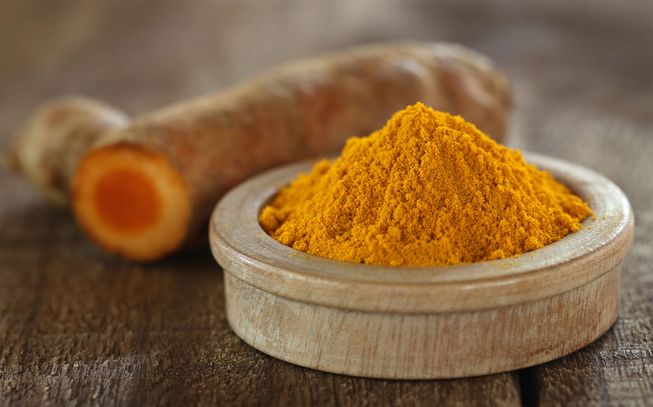
( Natural News ) One of the most versatile healing spices in the world, turmeric has over 800 health benefits and is just as effective as 14 different kinds of drugs but without their adverse effects.
Turmeric has been of great interest in recent years, especially its active component curcumin, which gives it a rich golden hue. However, curcumin alone is not enough to explain the medicinal capabilities of this spice as a whole.
A study has found that another important component of turmeric , called aromatic turmerone (ar-turmerone), can be a promising candidate to support regeneration of the brain. The study by German researchers evaluated the effects of this compound on neural stem cells (NSCs), which is a subgroup of brain cells that are capable of continuous self-renewal required for brain repair.
The researchers found that when brain cells were exposed to ar-turmerone, neural stem cells increased in number, and the newly formed neural stem cells also increased the number of fully differentiated neuronal cells, which means regeneration was taking place. This effect was also observed in rats injected with ar-turmerone.
Ar-turmerone is known to reduce inflammatory response caused by activated microglia, which is associated with neurodegeneration seen in Parkinson’s disease. With this, ar-turmerone derivatives may offer new ways of treating the disease .
Parkinson’s is also a degenerative disease caused by the selective death of neurons, resulting in decreased dopamine production. While treatments such as dopamine supplements are available, there is no way to inhibit dopaminergic neurodegeneration . Previous studies also reported that the inflammatory response caused by the activation of microglia is observed in the midbrain of Parkinson’s disease patients. Thus, researchers find ar-turmerone to be a major component of turmeric that could exhibit anti-tumor and anti-inflammatory effects on the microglia.
Due to the ability of ar-turmerone to increase proliferation and mobilization of NSCs, the ability of turmeric to treat a variety of neurodegenerative diseases is huge. Alzheimer’s, dementia and other neurological disease are driven in part by neurodegenerative activity in the brain and central nervous system.
While it is still in its early stages, the potential for turmeric to mitigate or reverse some of the effects of neurodegenerative diseases is promising. Other health benefits of turmeric
Turmeric also helps the body fight foreign agents and plays a role in repairing damages. Curcumin found in turmeric is as effective as other over-the-counter drugs in bringing down inflammation to the point of reducing the pain that people suffering from arthritis can feel in their joints.
This superfood also gained popularity for its antioxidant properties, and it is believed to have antioxidant properties so powerful that it can protect the liver from getting damaged by toxins. The antioxidant properties of turmeric provide protection against the damage that can be done to the body by unstable oxygen molecules (free radicals).
The components of turmeric also have the ability to increase the secretion of bile and the production of liver enzymes, giving the spice a liver-protective effect against the toxins in the body. Moreover, animal studies showed that turmeric can lower blood cholesterol levels and prevent the coagulation of blood platelets. (Related: Comparing the effects of turmeric and turmeric-containing herbal tablets on skin barrier function .)
Indian spices like turmeric are also known to help with weight loss. It can help balance the stress hormones, which cause sudden weight gain, by reducing the formation of fat tissue. (Related: Understanding the phytochemical power of turmeric .)
Turmeric is commonly used in culinary dishes, but it can also be used as a colorant and preservative . It is safe in recommended doses, but it should not be taken in high doses by people with gallstones to avoid hindering the flow of the bile – a fluid that is made and released by the liver and stored in the gallbladder.
Watch this video about 10 turmeric health benefits . No compatible source was found for this media. More related stories:
How to unlock the healing potential of turmeric .
Turmeric is nutritional “gold” for your brain .
Researchers are stunned at the tremendous anticancer potential of turmeric .
Use turmeric milk to fight against inflammation .
Sources include:
TheEpochTimes.com
ParkinsonsNewsToday.com
TimesOfIndia.IndiaTimes.com
InspiredHealth.co.uk Black Friday Part II Sale ends in:
7 Science-backed health benefits of eating foods high in omega-3 fatty acids
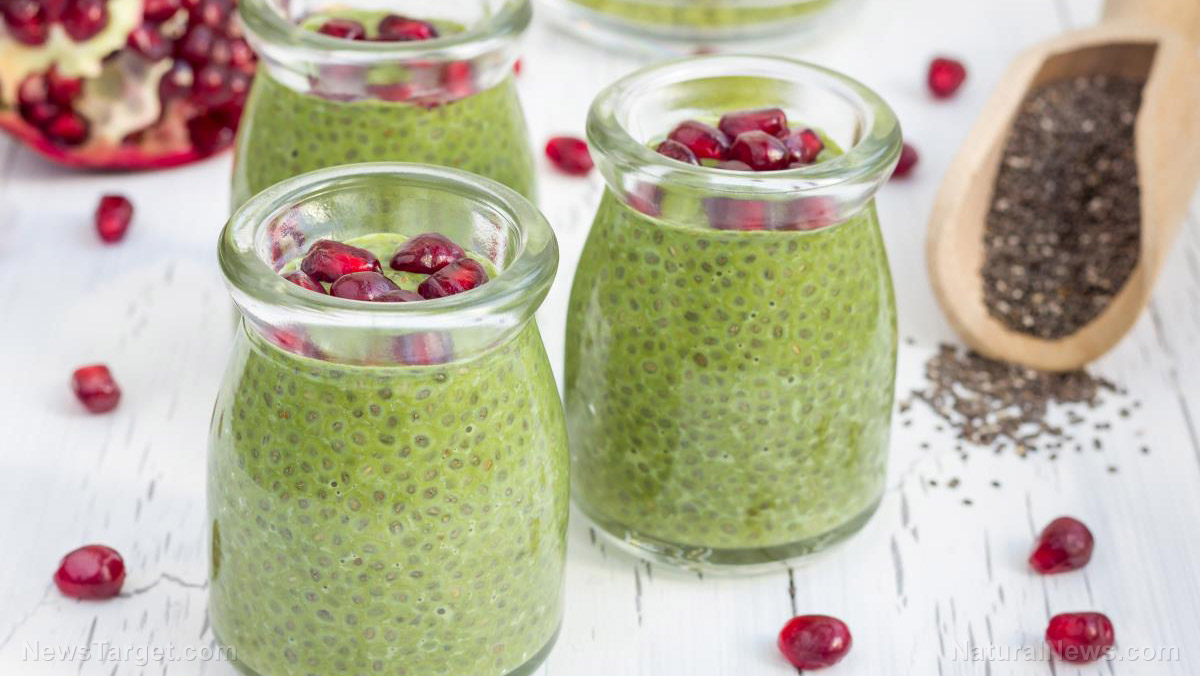
( Natural News ) Research suggests that omega-3s offer many health benefits, such as improving your heart health and boosting immunity.
Detailed below are seven amazing benefits of eating superfoods or taking supplements rich in omega-3s . What are omega-3s?
Omega-3 refers to a group of unsaturated fatty acids with a specific double bond in their chemical structure like alpha-linolenic acid (ALA), docosahexaenoic acid (DHA) and eicosapentaenoic acid (EPA).
According to Dr. Claire Thomas, a medical doctor and clinical content lead at Evergreen Life, omega-3s are called “essential fatty acids” since the human body is unable to produce them. You can only get omega-3s through your diet.
You can boost your intake of omega-3s by taking dietary supplements and eating animal or food sources, such as:
Animal sources Anchovies (2,053 mg per 3.5 ounces (100 grams))
Caviar (6,540 mg per 3.5 ounces (100 grams))
Cod liver oil (2,438 mg per serving (1 tablespoon))
Herring (2,150 mg per ounces (100 grams))
Mackerel (4,580 mg per ounces (100 grams))
Oysters (391 mg per 3.5 ounces (100 grams))
Salmon (982 mg per 3.5 ounces (100 grams))
Plant sources: Chia seeds (5,050 mg of ALA per ounce (28 grams))
Flaxseeds (2,350 mg of ALA per tablespoon (10.3 grams) of whole seeds, or 7,260 mg per tablespoon (13.6 grams) of oil)
Soybeans (670 mg of ALA in a 1/2 cup (47 grams) of dry roasted soybeans, or 1,440 mg per 3.5 ounces (100 grams))
Walnuts (2,570 mg of ALA per ounce (28 grams), or about 14 walnut halves )
Researchers have also been studying the potential health benefits of omega-3.
According to a study published in the journal Nutrients , these nutrients may be the key factor in reducing inflammation levels, a major risk factor for several chronic diseases. Data also suggests that omega-3 could be crucial to your cardiovascular, nervous and immune systems.
Thomas said that some studies suggest that the anti-inflammatory properties of omega-3s may also offer benefits for health problems like rheumatoid arthritis and other inflammatory and degenerative joint conditions, along with inflammatory bowel diseases (IBD).
Here are seven reasons to incorporate foods rich in omega-3s into your regular diet. Omega-3s help improve brain health
Data has found that omega-3s may be essential for the proper functioning of your central nervous system, especially the brain.
The results of a study published in the International Journal of Molecular Science revealed that omega-3s may help prevent or slow the progression of neurodegenerative diseases like Alzheimer’s disease and Parkinson’s.
Experts believe there are several reasons why omega-3s are good for the nervous system.
In an article in Frontiers in Aging Neuroscience , scientists reported that omega-3s are found in abundance in the brain cell membranes. They added that the compounds may affect how neurons communicate with each other.
In another review published in the journal Nutrients , data showed that DHA is one of the key components of healthy brain and eye development. The fatty acid may also have a crucial role in mental health throughout early childhood.
Data from the article revealed that low intake of omega-3 may increase the risk of developing conditions like attention deficit hyperactivity disorder (ADHD), autism, bipolar disorder and depression.Research suggests that people who regularly consume omega-3 are less likely to experience depression. Omega-3s help boost heart health Many studies have been conducted to determine the benefits of omega-3s for cardiovascular health and many studies suggest that the compounds offer significant protective effects on the heart.The results of a major Cochrane systematic review found that omega-3s may significantly reduce the risk of dying from coronary heart disease and cardiac events. It also showed that ALA may help prevent arrhythmia.Omega-3 can boost your heart health in several ways. The compounds produce hormones that regulate blood clotting, the contraction and relaxation of artery walls and inflammation in the body. This can be beneficial for preventing heart disease as the compounds work to reduce plaque in the heart’s arteries.Omega-3s may also improve the functioning of the endothelium, the thin membrane that lines the inside of your heart and blood vessels. According to a study from the journal Atherosclerosis , the compounds may help control how much fluid is carried with the blood, and how your blood vessels dilate and constrict.Findings from research conducted on overweight patients with metabolic syndrome have revealed that the compounds may help balance blood lipids, particularly by reducing levels of LDL cholesterol or “bad” cholesterol. Omega-3s support immune health Studies have also revealed that omega-3s may have another potential benefit: boosting your immune health.Some studies suggest that omega-3s may affect the composition of your gut microbes. This can then have a positive impact on your gut health.Because your digestive system is the first line of defense against harmful microbes, omega-3 may have an indirect but wide-ranging effect on your whole immune system.In a study published in the International Journal of Molecular Sciences , researchers reported that omega-3s can stimulate the production of antibodies and regulate the functioning of white blood cells. Omega-3s support eye health Omega-3 is a significant structural component of the retina so it’s no surprise that it also has a crucial role in eye health.Your retina captures the light that enters your eye and translates it into the images you see. Without omega-3s, you may experience problems with your eyesight.Omega-3 helps optimize “the variability of photoreceptor membranes, retinal thickness, function and provides a protective role.” Additionally, healthy levels of DHA can help prevent damage from bright light exposure and oxidative stress.In research published in The American Journal of Clinical Nutrition , scientists reported that omega-3s may help prevent neovascular eye diseases like diabetic retinopathy and age-related macular degeneration. Both conditions may cause blindness and they both lack treatment options that don’t have any negative side effects. (Related: Healthy skin, vision and mood: 3 Lesser-known benefits of taking omega-3 supplements .) Omega-3s support skin health Omega-3s, especially EPA, can help promote healthier skin.Getting enough EPA helps keep your skin moisturized and also reduces the risk and effects of acne.As documented in a study published in […]
6 Simple Ways to Improve Your Gut Health

This article originally appeared on Oxygen
When it comes to wellness topics, gut health often comes to mind — and it should. We’re learning that a healthy gut is an indicator overall well-being, and research has already shown that it can affect digestive, heart and brain health. Heck, what goes on in our gut community may even impact our weight and workout performances. A surprising amount of our immune system function can also be tied to gut health, also known as our microbiomes.
The human gut microbiota is a complex ecosystem that includes trillions of microorganisms on and in our intestines. And while you’ve probably heard a lot about probiotics when it comes to the microbiome, you might be less familiar with prebiotics and postbiotics — two more keys to achieving optimal gut health.
Here’s what you need to know about the “biotics” family and how to make them work harder for your best interests. Probiotics
These are living microorganisms (mainly bacteria and yeasts) found in certain foods and beverages that can take up residence in your digestive tract. It may sound creepy when you think of it that way, but as you’ve probably learned in a yogurt commercial or two, probiotics have various health benefits. They’re known for improving nutrient absorption and immune functioning, and one recent study found evidence that a greater microbiome diversity was associated with higher levels of active vitamin D — a nutrient many people are deficient in.
In general, probiotics including Lactobacillus and Bifidobacterium help maintain a healthy population of microbiota (or flora) living in the gut, positively affecting digestion and overall well-being. And for the most part, probiotics are found in fermented foods such as yogurt, kefir and kombucha. It’s thought that regularly consuming probiotics helps to replenish the beneficial microorganisms in your gut and help counterbalance any less desirable bacteria residing there.
While probiotics are little living creatures like bacteria and yeasts, prebiotics are certain components of foods including fibers, and, surprisingly, that feed and promote the growth of these healthy, or “good,” microorganisms living in our digestive tracts. In other words, prebiotics are the food probiotics require to reproduce and get to work on tasks such as . So, probiotics and prebiotics work as a team to make us healthier. This means you can take all the probiotic supplements you want and pound back all the yogurt in the refrigerated aisle, but it won’t have the maximum impact if you don’t give the probiotics a fuel source to thrive on as they take up residence in your gut.
Prebiotics are found in many whole foods you eat, such as fruits, asparagus, and .
An example of a postbiotic is the short-chain fatty acid butyrate, an energy source for the cells in your colon and what appears to be an . When you consider that inflammation is the hallmark of several chronic diseases including cancer and heart disease as well as digestive conditions like Crohn’s disease, you see why creating more of this and other short-chain fatty acid postbiotics through better nurturing our microbiome is so important.
A lack of butyrate production resulting from poor diet choices is to play a role in the development of colorectal cancer. that the short-chain fatty acid propionate that is created when microorganisms ferment certain dietary fibers can help defend against the heart-damaging effects of high blood pressure.
Short-chain fatty acids also such as that are involved in appetite and insulin secretion and can improve metabolic health. This could be one reason why high-fiber diets, which can increase postbiotic production via improved probiotic health, are especially satiating. And the short-chain fatty acid propionic acid in a way that makes it less likely to gain unwanted weight and develop type 2 diabetes.
You may have heard about the “gut-brain axis.” Well, we’re learning that postbiotic compounds are likely what mediate the impact that the microbiome has on including the development (or not) of depression and . Postbiotics including caffeic acid and ferulic acid that are produced when bacteria work on polyphenols in the large intestine could be a reason why consuming more of these antioxidants can help protect us from several conditions, including heart disease and certain cancers. They’re even believed DNA methylation, a chemical process that takes place inside your body that can alter the behavior of genes. They do so in a way that can scale back the biological clock.
Though postbiotics are a boon to your overall health, it’s still not well-understood exactly how they work. But what’s now clear is that our diet has a on microbial composition in the gut, in turn affecting a range of metabolic, hormonal, and neurological processes.
Take for instance in the where scientists determined that people whose diets scored better on the Healthy Eating Index — meaning more vegetables, fruits, whole grains and less added sugars, alcohol and solid fats — had a more potentially beneficial bacteria and lower amounts of potentially harmful bacteria in their gut microbiome. Here are some other ways to build a gut-friendly plate to get more out of these biotics.
Looks like scientists have given us a good reason to play the field when it comes to eating plants. As part of the American Gut Project, University of California San Diego School of Medicine researchers that people who ate more than 30 different types of plant-based foods per week had a greater diversity of beneficial gut microbiota than those who ate 10 or fewer types of plant foods in any given week.
On the flip side, that a meat-heavy diet, especially at the expense of plant-based foods, can shuffle around the types of microbes thriving in the gut to favor less beneficial types.
After analyzing blood and stool samples of 36 healthy adult participants, discovered that a 10-week diet high in fermented foods including yogurt, kefir, kimchi, kombucha and sauerkraut boosts microbiome diversity and decreases markers of inflammation, suggesting improved immune function.
Inulin belongs to a class of carbohydrates called fructans, which are plant carbohydrates that, because of their unique structure, resist digestion in the […]
Research suggests agmatine can boost brain health and uplift your mood naturally

( Natural News ) Athletes and bodybuilders are always eager to learn more about new products that can help enhance their workouts by promoting strength and stamina. Agmatine, a natural compound, is often used by health enthusiasts as a pre-workout supplement.
According to research, agmatine can also potentially be used to boost brain health and improve mood .
In one scientific review, researchers suggest that the compound can help prevent neurodegenerative diseases and assist in the recovery of brain injury patients. What is agmatine?
Agmatine or 4-aminobutyl-guanidine is produced in your body from arginine, an amino acid found in foods like chickpeas , lentils, pork and poultry.
When used as a pre-workout supplement, experts recommend not taking it with protein since dietary protein can slow the absorption of agmatine . This then diminishes its benefits.
Agmatine is often listed on supplement labels as agmatine sulfate . Dosages range between 250 mg to 1,000 mg per scoop, with intake recommendations between one to two grams per day.
Agmatine has antioxidant and anti-inflammatory effects and can scavenge harmful free radicals that cause oxidative damage to your organs and tissues. Some people believe agmatine can help enhance workouts by increasing levels of beneficial nitric oxide. This then dilates blood vessels and promotes healthy circulation.
Data also suggests that agmatine may help activate the release of pain-killing, mood-lifting endorphins, which can boost motivation and mood. This suggests taking agmatine can help make you feel more inclined to exercise. The compound may also help block aged glycation end products. Your body produces these potentially carcinogenic compounds after you eat charcoal-broiled or well-done meats.
Agmatine may also help down-regulate matrix metalloproteinases (MMPs), which are tissue-degrading enzymes that can facilitate the spread of malignant tumors. (Related: Healthy habits that can boost brain health .) Agmatine and pain relief
Studies show that agmatine works against the glutamate receptors that affect pain perception.
Data from preliminary studies have supported agmatine’s ability to reduce pain and strengthen the pain-killing effects of prescription opioids. Experts hope that agmatine can be used to help reduce the amount of medications needed and decrease the possibility of addiction to opioids.
In a controlled trial published in the journal Pain Medicine , scientists reported that agmatine sulfate significantly relieved the pain of herniated lumbar disc-associated radiculopathy or painful nerve dysfunction caused by spinal compression without causing serious adverse events.
The research team believes that agmatine can be used as a “safe and effective treatment for alleviating pain and improving quality of life.”
In a 2021 review published in the journal Neurochemical Research , scientists wrote that using agmatine helped relieve idiopathic pain or chronic pain with no clear medical cause in participants and improved stress-mediated behavior. Can agmatine lift your mood?
Some natural healers recommend agmatine to promote a calm, stable mood and ease routine anxiety.
Supplementation with agmatine may help activate serotonin, the “feel good” chemical in your body while also decreasing levels of cortisol, the “stress” hormone that builds up when you are under duress.
More research is needed, but some small studies have suggested that agmatine can reduce depressive symptoms.
In a review published in the European Journal of Neuropsychopharmacology , scientists suggest that agmatine has antidepressant effects.
Additionally, agmatine may help regulate blood sugar, which could help alleviate the mood swings that are linked to post-meal blood sugar “spikes.” Agmatine and brain health
Research also suggests that agmatine may have “positive effects” on Parkinson’s and Alzheimer’s disease and that it may help protect against ischemic stroke.
Scientists have also found that agmatine can help relieve symptoms of morphine withdrawal, suggesting that the compound can be used to prevent drug addiction.
At the same time, agmatine holds promise because it can help protect brain cells among patients with traumatic brain injuries.
According to a 2018 study published in the journal Human and Experimental Toxicology , agmatine can help protect brain cells from oxidative stress and inflammation caused by laboratory-induced Parkinson’s .
Researchers discovered that agmatine significantly improved motor activity and helped improve performance on tests. Results also showed that agmatine helped reduce markers of inflammation like interleukin and tumor necrosis factor.
Experts recommend taking 150 mg to 2,000 mg of agmatine a day. If you are not used to taking the compound, check with your integrative physician before supplementing.
Visit BrainHealthBoost.com for more articles with tips on how to improve your brain health.Watch the video below to find out why magnesium is crucial for brain health . No compatible source was found for this media. More related stories: Researchers share 3 key steps to ensure optimal brain health . Sources include: NaturalHealth365.com TigerFitness.com
Why Am I So Forgetful? How to Improve Your Memory and Remember Almost Anything

You loved that series on Netflix —or was it Hulu ? —with what’s his name from that movie with the actress, you know, with the cool hair?
If you’ve had senior moments like these, you’re not alone.
“Nearly everyone struggles with some form of memory loss before reaching middle age,” says Gary Small, MD, Chair of Psychiatry at Hackensack University Medical Center and author of The Memory Bible: An Innovative Strategy for Keeping Your Brain Young .
In a nationwide Gallup poll of 18,552 U.S. adults 18 and older, researchers found that about 14% of the youngest group (ages 18-39) complained about their memory.
And the problem seems to be getting worse, thanks to increased screen time and bad lifestyle choices.
But you can fight back against forgetfulness.
On a recent episode of the Write About Now Podcast , Dr. Small laid out some memory-building techniques that will make your brain happy. Why we’re so forgetful
To understand why we forget things, it helps to understand how we remember them in the first place.
“Memory has two major components: learning and recall,” explains Dr. Small. “You got to get that information into your brain, and you have to be able to retrieve it.”
But anyone who has ever played around with a smartphone, computer, or social media knows how distracting they can be. And this is a problem.
“If you’re not focusing your attention, you’re never gonna get that information into your brain,” Dr. Small says. “We are constantly bombarded with more and more incoming data. This often results in information overload that likely decreases the percentage of stimuli that enter our short- and long-term memory stores.” Bad health equals bad memory
Unhealthy lifestyle choices are another major factor in memory loss.
Just as eating too many donuts and not getting enough sleep can lead to problems such as diabetes, obesity , and heart disease, those behaviors can also affect our brain health, according to Dr. Small. “They cause your brain to prematurely age.”
Our mental health is also suffering. Many of us feel overwhelmed because of the pandemic, job burnout, gas prices, and overall life in the 21st century.
“When we are experiencing feelings of depression and prolonged anxiety or stress, we become distracted, and our memory abilities diminish,” explains Dr. Small. How to improve your memory
While many of us struggle with forgetfulness, there are effective ways to get our memory back into fighting shape.
Look, Snap, Connect
Dr. Small suggests a memory skill he and his former colleagues at UCLA developed called “Look, Snap, and Connect.”
The premise is if you can make something meaningful, it will become memorable. How does it work?
Look: First, slow down, notice, and focus on what you want to remember. Take in all the details and meaning, such as a new face, a conversation, or directions to a new location.
Snap: Create a mental snapshot of what you want to remember. The brain has a natural ability to remember things visually, so leverage that. Say, for example, you’re meeting someone for the first time and want to remember them. A mental snapshot might be their hairstyle or their smile.
Connect: Link up those mental snapshots to be remembered in a chain, starting with the first image, which is associated with the second, and so on. If you meet someone named Harry and notice he has a lot of hair. You connect Harry with hairy.
Get moving
Studies show that exercise increases memory function. Research from the University of Illinois found that when you exercise, your body produces brain-derived neurotrophic factor (BDNF), which Dr. Small describes as “fertilizer for your brain cells.” BDNF causes “your brain to sprout branches so they can communicate more effectively,” he explains.
You don’t have to adopt a rigorous regime, either. Even a brisk 20-minute walk daily lowers your risk of Alzheimer’s disease, according to Dr. Small.
Get more sleep Insomnia is memory’s enemy. When we don’t get enough sleep, we shut down our ability to concentrate and remember stuff. Dr. Small recommends seven to eight hours of sleep each night. He also advises against too much caffeine, which causes us to become irritable and distracted. Eat more foods with antioxidants and curcumin Obesity can trigger late-life cognitive impairment, according to Dr. Small. He recommends avoiding processed foods, such as refined sugars, which are pro-inflammatory and bad for the brain.Oxidation also causes wear and tear on your brain cells, so try to eat foods high in antioxidants, such as fish, nuts, olive oil, and avocados.Dr. Small is also high on curcumin, a yellow pigment found in cumin, curries, and mustard.In research done at UCLA, people taking curcumin improved their scores on memory tests by 28 percent over 18 months. Do brain aerobics Just like we work out our muscles, we also need to cross-train our brains. Think of it as 24-Hour Fitness for our hippocampus.According to Dr. Small, “The information in our brains is passed through billions of dendrites, or extensions of brain cells, similar to branches of a tree. Without use, our dendrites can shrink or atrophy; but when we exercise them in new and creative ways, their connections remain active as they pass new information along . “Mentally stimulating activities can include playing wordle and crossword puzzles, listening to music, writing in a journal, solving brainteasers, or watching Jeopardy! In his book, Dr. Small suggests some brain builders, including this exercise: Take a piece of paper and a pencil and try writing your first name using your non-dominant hand (i.e., left hand if you are right-handed). Now, take a second pencil and try writing your first name using both hands at the same time. Now, try it with your last name To get more memory-sharpening skill, listen to the entire Write About Now Podcast interview with Dr. Gary Small: Entrepreneur Editors’ Picks
that can

Kids who play video games have better memory and better control over their motor skills than kids who don’t, according to a new study looking at adolescent brain function.
Video games might not be responsible for those differences — the study can’t say what the causes are — but the findings add to a bigger body of work showing gamers have better performance on some tests of brain function. That lends support to efforts to develop games that can treat cognitive problems .
“This study adds to our growing understanding of the associations between playing video games and brain development,” said Nora Volkow, director of the National Institute on Drug Abuse, in a statement .
The study used data from the Adolescent Brain Cognitive Development (ABCD) study , which launched in 2018 and is tracking brain development in thousands of children in the United States as they grow into adulthood. Participants periodically go through a battery of assessments, including brain imaging, cognitive tasks, mental health screenings, physical health exams, and other tests.
To study video games and cognition, the research team on this new study pulled from the first set of assessments in the ABCD study. It included data on 2,217 children who were nine and 10 years old. The ABCD study asked participants how many hours of video games they played on a typical weekday or weekend day. The research team divided the group into video gamers (kids who played at least 21 hours per week) and non-video gamers (kids who played no video games per week). Kids who only played occasionally weren’t included in the study. Then, the research team looked at the kids’ performance on tests that measure attention, impulse control, and memory.
The video gamers did better on the tests, the study found. They also had differences in brain activity patterns from the non-gamers — they had more activity in brain regions involved with attention and memory when they were performing the tests. Notably, there were no differences between the two groups on measures of mental health (more evidence rebutting widespread concerns that video games are bad for emotional well-being).
This study adds to a large body of work showing differences in the brains of gamers compared with non-gamers and hinting that gamers have an edge on certain types of brain function. Companies are trying to leverage those differences to develop video games that treat cognitive conditions. Akili Interactive, for example, has a prescription video game to treat ADHD , and DeepWell Digital Therapeutics wants to find the therapeutic value in existing games.
But despite all that work, it’s still not clear why there are differences between gamers and non-gamers in this age group. It could be that video games cause the improvements in cognition. It could also be that people who already have better attention for tasks like the ones in this study are more drawn to video games. There are many different types of video games, as well — this new study, for example, didn’t ask what games the gamers played.
“Large gaps in our knowledge on this topic persist,” wrote Kirk Welker, a neuroradiologist at the Mayo Clinic, in a commentary accompanying the study.
Discovery gives insight into brain function, breakdowns
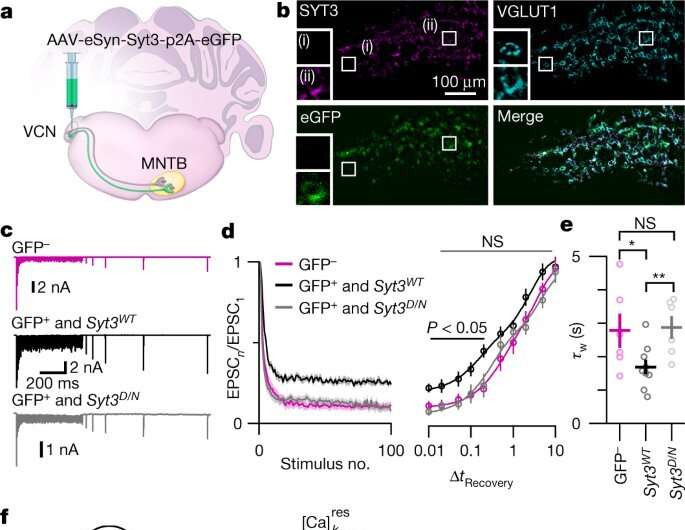
Recovery from depression is accelerated by Ca2+ binding to presynaptic SYT3. Credit: Nature (2022). DOI: 10.1038/s41586-022-05337-1 Scientists at Oregon Health & Science University have identified a long-sought gene-encoded protein that enables the brain to communicate a broad range of signals across gaps between neurons, known as synapses. The discovery published today in the journal Nature .
Known as synaptotagmin-3, or SYT3, the protein helps to replenish the supply of chemical neurotransmitters that carry signals between neurons.
“When brain cells are active, they release neurotransmitters to communicate with their neighbors,” said senior author Skyler Jackman, Ph.D., assistant scientist in the OHSU Vollum Institute. “If a cell is very active it can exhaust its supply of neurotransmitters, which can cause a breakdown of communication and brain disfunction.”
“It turns out that cells have a boost mode that replenishes their supply of neurotransmitters, but until now, we didn’t know the molecule that was responsible. We found that SYT3 is directly responsible for that neurotransmitter boost,” he said. “This gives us new insight about how brains can break down and fail to process information properly.”
Researchers generated “knock-out” mice that did not have the SYT3 gene. They found that those mice lacked the more robust level of synaptic transmission , compared with control mice that had the gene.
Notably, mutations of the SYT3 gene have been implicated in human cases of epilepsy and autism spectrum disorder . The research published today suggests the possibility of developing gene therapies or pharmaceutical approaches targeting SYT3, Jackman said.
“Imbalances in neurotransmitter release are the underlying causes for many neurological disorders,” said lead author Dennis Weingarten, Ph.D., a postdoctoral researcher in the Jackman lab. In the future, he said, “understanding these molecular switches—such as SYT3—is a crucial step for us to combat these diseases.”
Jackman’s lab specializes in the study of synaptic transmission. The human brain contains hundreds of trillions of synapses. Discovering the molecules that endow these specialized structures with their unique properties is essential for understanding brain function and neurological disorders.
“Synaptic transmission is fundamental for sensing our surroundings, making decisions and nearly every other feature of our inner world,” Jackman said.
Provided by Oregon Health & Science University
